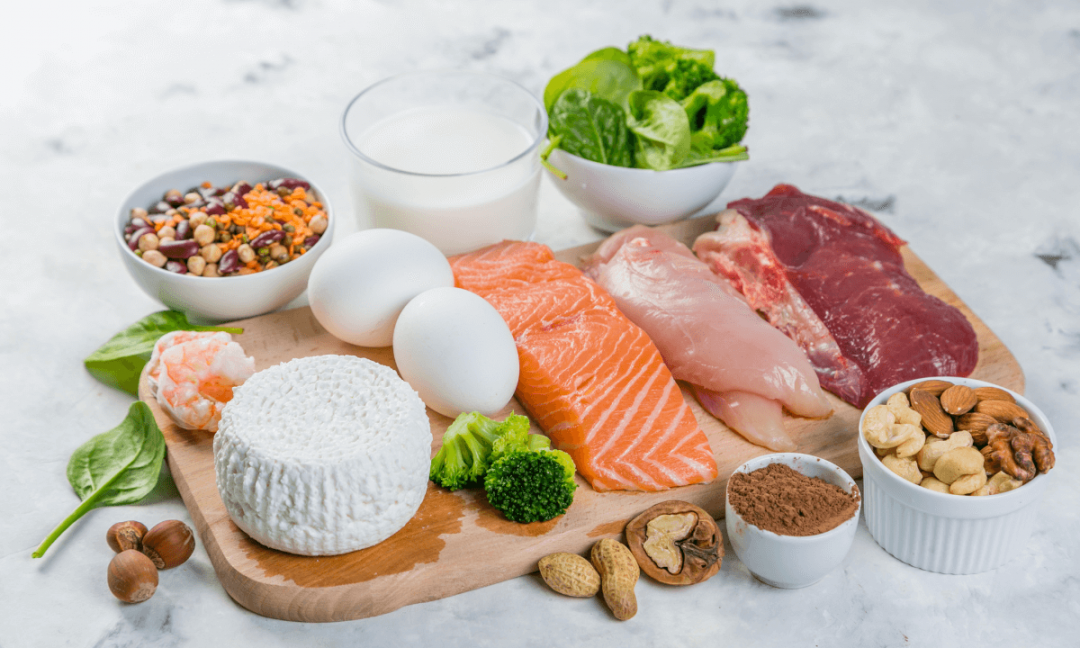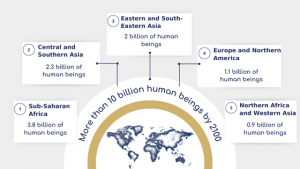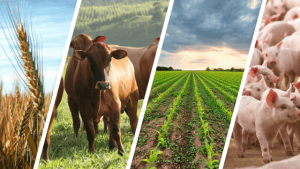
The protein challenge of the coming decades
There can be no denying it: the world’s population is growing, and inequalities in access to food are increasing. More than ever, food security is a global issue. Against this backdrop, the protein challenge has emerged; a problem that is likely to become even more acute in the decades to come. Is it possible to provide sufficient protein for the world’s entire population? What solutions are available to meet this protein challenge?
Growing protein requirements worldwide: a threefold challenge
A demographic challenge

Figure 1: World’s population in 2100
By the end of the century, the Earth will be home to more than 10 billion people [1]. This demographic growth is mainly driven by developing countries. What’s more, their consumption habits are changing, leading to an undeniable increase and change in global protein demand. The need to overcome this protein challenge will require a new approach to the distribution of food and nutritional resources. What solutions need to be put in place to feed the world’s entire population in sufficient quantities?
A nutritional challenge
Protein consumption around the world is highly heterogeneous, both in terms of quantity and quality [2]. People in developed countries consume more animal protein than is recommended by local authorities. This over-consumption – of meat in particular – brings with it an increased risk of certain pathologies such as cardiovascular disease and obesity. Conversely, in developing countries, average protein consumption is lower than recommended. The priority for public authorities in these countries is first and foremost to reach the recommended levels in terms of quantity, in order to combat malnutrition.
From a global nutritional standpoint, the protein challenge is twofold:
-
-
- Rebalance access to protein on a global scale, by moving towards a better distribution of resources to meet the protein challenge.
-
-
-
- In countries where this is possible, adapt consumption patterns to meet nutritional recommendations. In all developed countries, recommendations are unanimous in favoring lean meats, dairy products, and vegetable proteins. However, it is recommended that we reduce the proportion of protein provided by red and processed meats, which come with known health risks[2]. The latest FAO and WHO recommendations call for an optimal ratio of 50% animal proteins and 50% plant proteins in the diet, for both health and environmental reasons.
-
An environmental challenge

The last issue to be considered is the environment. Food accounts for over 28% of global CO2 emissions [3]. Protein production is particularly energy intensive. There are, however, differences in the impact of different protein sources. Meat and milk, for example, have very different environmental impacts. This difference can be explained by the lower impact of dairy systems compared to meat production systems. In France, for example, the average carbon footprint of milk varies between 1 and 1.5 kg CO2 per liter of milk [4], while that of a kilo of meat is around 10 times greater [5].
Is a 100% plant-based diet the solution to the protein challenge?
A quantitatively and qualitatively incomplete solution
It should be noted that plant sources are less dense in protein than animal sources [6]. What’s more, in terms of quality, unlike animal proteins, plant sources have an incomplete profile of essential amino acids.
Moreover, in developed countries, animal proteins play a central role in people’s diets. It still seems complicated to shake up these habits. However, the trend is towards a gentle vegetalization of consumers’ plates. In fact, dairy proteins are sometimes used in the plant-based alternatives that are flourishing today.
So, a 100% plant-based diet does not really seem to be the solution to the protein challenge.
Protein diversity: the key to the protein challenge

The key to all these issues is, ultimately, protein diversity. Varying animal and plant protein sources would provide a complete, balanced, and sustainable intake.
In this sense, dairy proteins are an ally in meeting the protein challenge. They offer excellent nutritional quality, and milk has a lower environmental impact than most other animal protein sources. Moreover, dairy proteins are already well known to the world’s population. There would therefore be no particular barrier to increasing their consumption.
Lactalis Ingredients offers a wide range of protein solutions:
-
-
- Prolacta®: soluble milk proteins for infant formula and baby food.
- Pronativ®: native proteins – micellar caseins and whey proteins – extracted from milk.
- Dairy powders: a wide range of milk powders that can be used in a wide variety of applications: dairy products, bakery products, chocolate, and more.
-
So, from producer to industrialist to consumer, everyone has a role to play in meeting the protein challenge and initiating the transition. For our part, we are committed to producing more responsibly. Find out more about our commitments in our CSR report.
Sources:
[1] Stein Emil Vollset et al. Fertility, mortality, migration, and population scenarios for 195 countries and territories from 2017 to 2100: a forecasting analysis for the Global Burden of Disease Study. The Lancet, 2020.
[2] WHO. Plant-based diets and their impact on health, sustainability and the environment: a review of the evidence: WHO European Office for the Prevention and Control of Noncommunicable Diseases. Copenhagen: WHO Regional Office for Europe; 2021.
[3] Institute For Climate Economics, Estimer les émissions de gaz à effet de serre de la consommation alimentaire : méthodes et résultats. 2019.
[4] CNIEL. Dico du lait. 2014
[5] J.B. Dollé, P. Faverdin, J. Agabriel, D. Sauvant, K. Klumpp. Contribution de l’élevage bovin aux émissions de GES et au stockage de carbone selon les systèmes de production. 2013.















